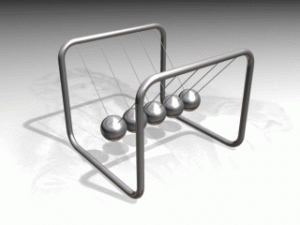I have been training with kettlebell’s since 2007. There have been some good swings, some great swings and some pretty ugly swings along the way. As I prepped for my RKC, my only resource was Enter the Kettlebell. It was a ton of help, but the absence of a coach wasn’t the ideal situation. The RKC weekend was brutal. I passed, but man was I sore. I knew that I was “on my way” or so to speak, but I also had (and still do have) a lot to learn.
Fast forward a few years. In the kettlebell community we have tried every trick in the book to help teach the basic mechanics of the swing. We use bands, towels, dowels and even have slow motion video readily available on our smart phones. We pattern the hip hinge to death, we pattern the plank to death and still some people can’t swing the darn bell. Why?
Short answer: their timing is completely off!
In my opinion, the timing of the swing, snatch and clean is the most under-coached aspect of kettlebell training. It also may be a vital missing component in your technique.
Approximately 40% of the population is made up of visual learners. Understanding this might play a role in how you teach. When a client asks ” Can you show me a few reps of that?” they are basically saying that a visual cue will give them a quicker and greater understanding of the exercise.
In comes Newtons cradle, a great example of newtons 3rd law and an excellent cue on how to teach the timing of a kettlebell swing.
Lets start with the device at a standstill, nothing has happened therefore no action has occurred. Potential energy can be created when one or several of the balls are pulled to one side. It’s only potential energy until a ball is released then its converts to kinetic energy.
If you understand the basics of newtons cradle then you already understand the basics of the kettlebell swing. Let’s dig a bit deeper shall we?
The hike pass is the first part of the kb swing and it’s eerily similar in how we start newtons cradle. In the cradle, we pull a ball back (potential energy) and release it, sending it crashing into the other balls. The energy cannot transfer until the point of impact and only then will the ball on the opposing side move.
What does this have to do with a KB swing? Everything! 🙂
If an athletes technique is correct, it should look similar to newtons cradle. As we hike the bell into a deep hinge, we load up the posterior chain and prepare for a powerful hip snap to propel the bell forward into the swing. The elbows should stay connected to the ribcage until the hips finish then the bell can float to the desired position (roughly shoulder height). On the way back down, we should go back into our hinge when our elbows re-connect with our ribcage. The timing of the perfect swing should replicate how the cradle works.
Here is a breakdown:
Newtons cradle Kettlebell swing
Pull a ball back Hike pass
Moment of impact Hips finish, bell floats
Opposing ball floats Torso is vertical with hips finished
Second impact Elbow re-connect with ribs into the hinge
Rinse and repeat! 🙂
Here is where I see it get goofy all the time. The bell is shoulder height (in the finish position), but the hips finish second. It pretty much looks like someone is chasing the bell. Again, their timing is way off!! It would be like someone releasing one ball on one side of the cradle only to have the opposing side move before the moment if impact. Not gonna happen. Get my point?
Another way to think about this is linkage vs. leakage. If you are all linked up with proper timing, the swing will look like newtons cradle. The hips snap, elbows come off the ribs, bell floats, elbows re-connect to the ribs and then back into the hinge. This is a beautiful and efficient swing.
The ugly style swing is an example of leakage. Power production is very low so heavy swings seem impossible. The hips finish second, when the bell is already in front of the body. The down swing starts with a pre-mature hinge causing the bell to be late which puts un-needed torque on the lumbar spine. You will know it when you see it, it looks like someone is reacting to the bell rather than directing the bell.
Remember that timing is everything and linkage is better than leakage when it comes to the kettlebell lifts!


Mike, great post good analogy,I’m going to use it in my teaching! Also video feedback immediately following swing sets has helped me help those who are struggling,